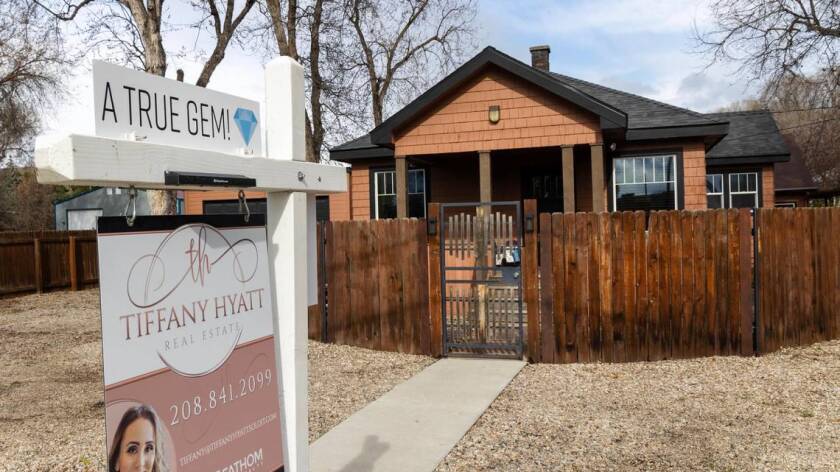Although local governments are responsible for setting property tax rates, state legislatures often impose limitations on local property tax revenue, rates, and increases in assessed values. However, municipalities rely on property taxes for revenue, and such constraints can hamper their ability to fund schools and other public services, particularly in rapidly growing areas. States have at times considered offsetting property tax breaks by increasing another revenue stream, such as sales taxes. But these efforts have had an uneven track record. More commonly, local policymakers must adjust their budgets to any new revenue growth constraints.
More recently, record-high budget surpluses following the pandemic, attributed in part to significant federal aid, enabled some states to compensate local governments—at least temporarily—after state lawmakers enacted property tax relief measures. For example, Idaho diverted money to local school districts to make up for lost revenue from property tax rebates passed during the 2023 legislative session. During a special legislative session on property tax relief in November 2023, Colorado used $200 million of general fund revenue to reimburse local governments because the state had increased property tax exemptions from $15,000 to $55,000 and established a property tax cap.
But as the flow of revenue slows in many states, lawmakers are seeking more sustainable solutions to these property tax issues. Colorado’s special session, called after a complicated property tax proposal was rejected at the ballot box last fall, established a bipartisan commission to study such questions and propose longer-term solutions. On March 15, the commission approved a slate of property tax reform ideas, ranging from gradually reducing commercial property tax rates to providing targeted relief for low-income families and small businesses. However, as of late April, with little time remaining in the legislative session, Colorado lawmakers had yet to introduce the comprehensive property tax reform package they had promised.
Meanwhile, complications loom for the state’s lawmakers after the legislative session ends: Two influential advocacy groups are pursuing ballot measures for 2025 that would set assessed property values at 2022 levels and cap future property tax growth. Meanwhile, an opposing group has introduced a ballot measure that would require Colorado to compensate local governments in the case of property tax cuts or caps, but such a requirement would cut into funding for other state programs, such as Medicaid and higher education.
The Wyoming Legislature, which adjourned in early March, passed five bills to address soaring property taxes in their state, though only four were signed into law by Governor Mark Gordon (R). Two of the enacted bills provide property tax exemptions for long-term homeowners and veterans, though only one appropriates funds to reimburse local governments for lost revenue from the exemption. House Bill (H.B.) 45 effectively caps annual increases on residential property taxes at 4 percent. It does not include a sunset date or backfill lost local revenue. And H.B. 4 expands the income qualifications for the state’s property tax refund program, but Gov. Gordon used a line-item veto to remove the highest income bracket from the program.
The governor vetoed the legislature’s fifth property tax bill, S.B. 54, which would have provided a 25 percent exemption on up to the first $2 million of a home’s fair market value. In his veto explanation, Gov. Gordon expressed concerns about the fiscal impact of the bill, which would allocate state dollars to cushion school districts and other local government entities for the estimated $220 million in revenue losses. He called the bill “a temporary relief measure that could lead to budget shortfalls and [would] ultimately be paid for by raising taxes on our children.” Gov. Gordon’s veto sparked criticism and calls from some legislators to hold a special session to override the veto. That session did not happen.
Nebraska Governor Jim Pillen (R) kicked off 2024 with the ambitious goal of cutting property taxes statewide by 40 percent, funded by increasing the state’s sales tax. But Pillen’s controversial proposal died on the final day of the legislative session, even after the bill’s sponsor, state Senator Lou Ann Linehan (R), agreed to remove the proposed tax increase from the bill.
In a speech following the bill’s defeat on April 18, Gov. Pillen pledged to convene a special session, and legislators are discussing other options for reducing property taxes, including delaying income tax cuts and legalizing marijuana or online gaming to provide a revenue source for property relief.
Montana Governor Greg Gianforte (R) has taken a different approach to tackling property taxes. In January, he signed an executive order establishing a property tax task force focused on developing policy proposals that slow the property tax growth rate, increase transparency in state and local property tax decisions, protect low-income and retired homeowners, and ease the burden of large spikes in property reappraisals. Gov. Gianforte wants the group to do all of that without raising sales taxes or cutting into school funding. During the task force’s first meeting in February, he warned, “This is no small task. Property taxes are very complex, and we're not going to kick the can down the road again. We need to solve it.”
Final Thoughts
As states grapple with the pressing issues surrounding property tax relief, legislators must also consider the implications on the sustainability of local government funding. The challenges posed by skyrocketing property values, particularly in regions like the Mountain West, underscore the urgency of implementing effective measures. Although some states have managed to provide temporary relief through budget surpluses, the long-term viability of such solutions remains uncertain as revenues dwindle.
This article was first published by the Pew Charitable Trusts. Read the original article.











